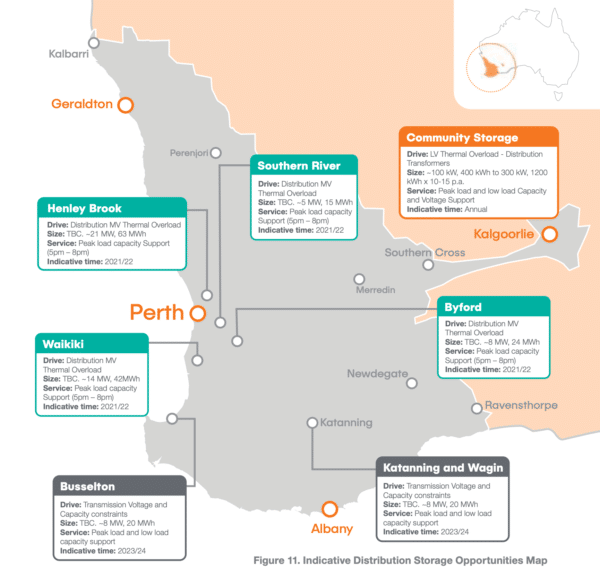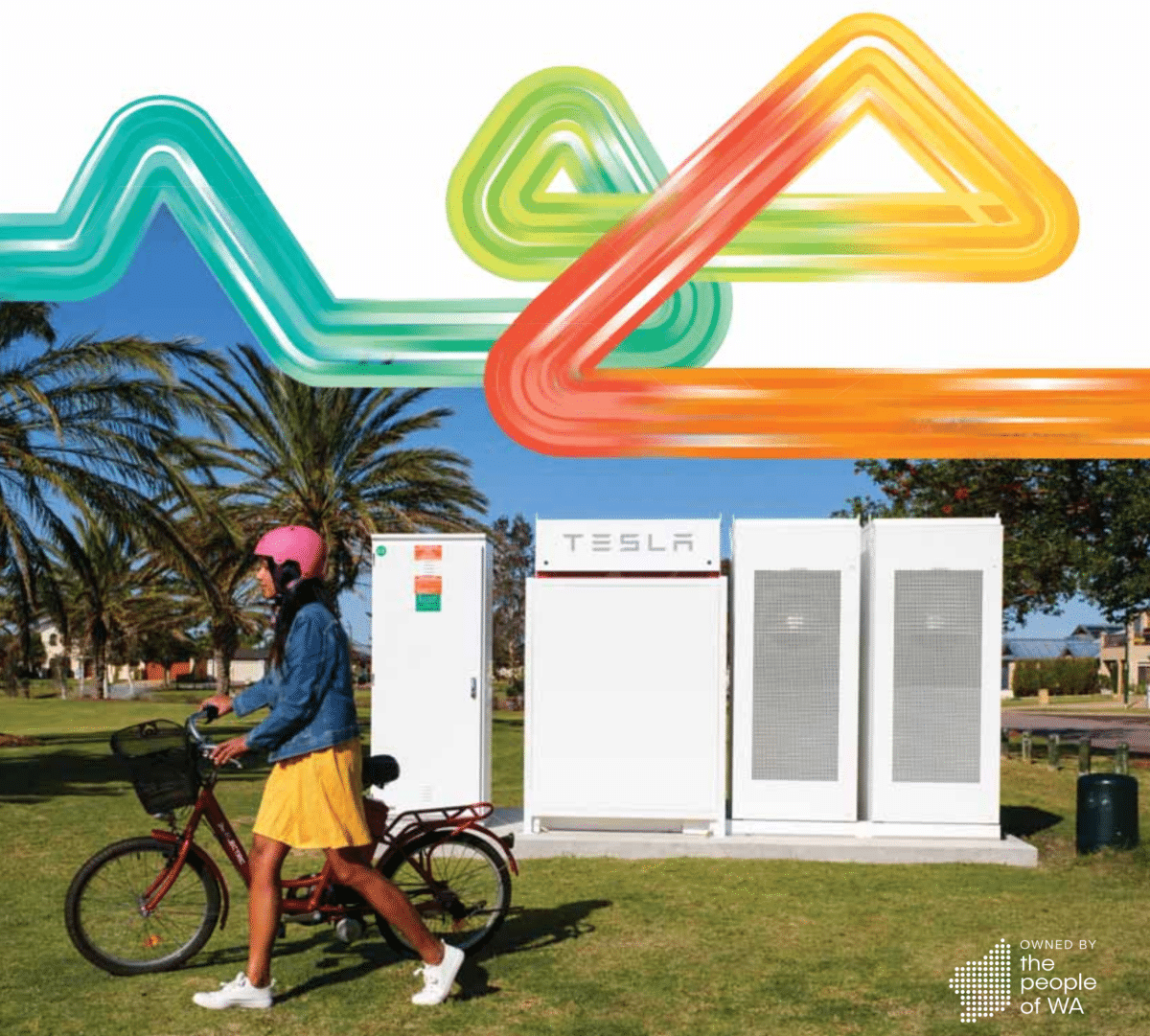Western Power, the Western Australian state-owned distribution system operator, is seeking registrations of interest from industry and retailers in providing an extra 50 MW of non-network battery energy storage solutions, including behind the meter batteries between 2021 and 2023..
The call out is directed towards providers that can offer distributed storage services and/or installations to benefit communities in parts of the south-west grid, and ties in with the strategies laid out in the WA Distributed Energy Resources Roadmap.
“This proposed further investment follows the delivery of 12 community batteries during the last 18 months to help meet Western Australians’ energy needs now and, in the future,” said Western Power Principle Engineer, Nathan Kirby in a statement that accompanied the publication of the Distribution Storage Opportunities Information Paper 2020.
“Batteries deliver a range of network and customer benefits, particularly with the growth of solar where we now have one in three households with solar panels,” said Kirby.
Western Australia is delivering on its DER Roadmap like clockwork, and the rollout of storage has been calculated to support the grid at a strategic moment to extract optimal value from the existing network; as well as facilitate further residential and business investment in solar generation.
The Distribution Storage Opportunities paper says the network benefits of distributed storage opportunities have been proven by the PowerBank community battery trials referred to by Kirby.
Scenario planning, using advanced digital tools has shown “via proof of concept demonstrations that correctly located distribution storage can be a no regrets investment during a time of significant change and uncertainty”, says the paper.
As a result, the opportunities have been precisely forecast and outlined.

Image: Western Power
Getting maximum value out of the existing grid
For example, the paper recommends that between 2021 and 2022, the Henley Brook distribution network will benefit from 21 MW (63 MWh) of battery energy storage to provide backup energy supply during peak-load evenings — which typically occur on about 10 days of the year.
And between 2022 and 2023, the Busselton and Margaret River transmission or distribution network will need around 8 MW (20MWh) of backup between 5-8pm on some 50 peak-load days that occur during summer and winter; this battery will also need full charge capacity for minimum load days, when rooftop solar generation more than meets demand and storage is needed to assist with voltage stabilisation.
In the past, expensive network augmentation would have been required in order to respond to what are relatively rare destabilising peaks and troughs and ensure reliability of power supply.
But the paper notes that not only is energy storage technically viable to meet these needs, but the technology has matured and now combines advanced capabilities and efficiencies with cost reductions, such that it provides an increasingly economic alternative to traditional investments.
Some typical investments that battery placement can defer or entirely avoid on the South West Interconnected System (SWIS) are for higher capacity distribution transformers; reactive compensation equipment; and new medium voltage feeders or feeder interconnections.
What’s in storage?
A key advantage of distribution storage over traditional investment options, says the paper, is also that “it has the potential to access multiple value streams”, such as:
- Maximising customer self consumption. Where rooftop solar without battery backup is a use-it-or-lose-it situation, shared storage provides access to rooftop-solar-generated electricity long after the sun has gone down.
- Providing an alternative electricity supply to customers during blackout events
- Delivering essential system services such as frequency control as needed in different areas
- Providing value from energy arbitrage if the storage displaces the need to produce energy from other sources.
“The plan outlines opportunities where we can work with private industry and WA businesses to obtain distribution storage services and installations across the network, including residential and commercial customer batteries as well as flexible loads and other innovative demand reduction services,” says Kirby.
This content is protected by copyright and may not be reused. If you want to cooperate with us and would like to reuse some of our content, please contact: editors@pv-magazine.com.









3 comments
By submitting this form you agree to pv magazine using your data for the purposes of publishing your comment.
Your personal data will only be disclosed or otherwise transmitted to third parties for the purposes of spam filtering or if this is necessary for technical maintenance of the website. Any other transfer to third parties will not take place unless this is justified on the basis of applicable data protection regulations or if pv magazine is legally obliged to do so.
You may revoke this consent at any time with effect for the future, in which case your personal data will be deleted immediately. Otherwise, your data will be deleted if pv magazine has processed your request or the purpose of data storage is fulfilled.
Further information on data privacy can be found in our Data Protection Policy.